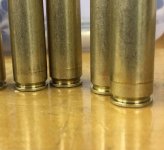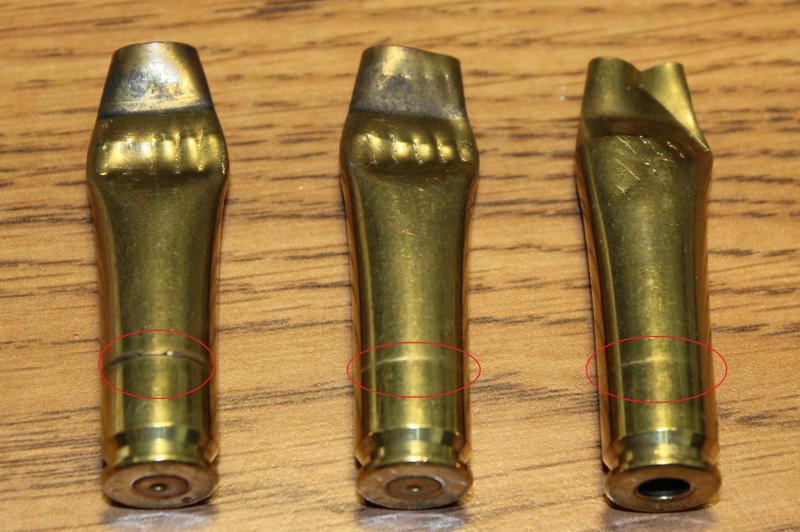jackstrawIII
New member
Another rookie question here:
I just FL resized this 270 Win brass for the first time. It is once fired. I'm getting these lines on some of them, but not all. Cases shouldn't be separating this quickly, right? Is it possible that they're not actually separating, but that this ring is being caused by the die in some way?
I've read both opinions: that this sort of mark indicates a problem, and that it doesn't. Help!
I just FL resized this 270 Win brass for the first time. It is once fired. I'm getting these lines on some of them, but not all. Cases shouldn't be separating this quickly, right? Is it possible that they're not actually separating, but that this ring is being caused by the die in some way?
I've read both opinions: that this sort of mark indicates a problem, and that it doesn't. Help!


